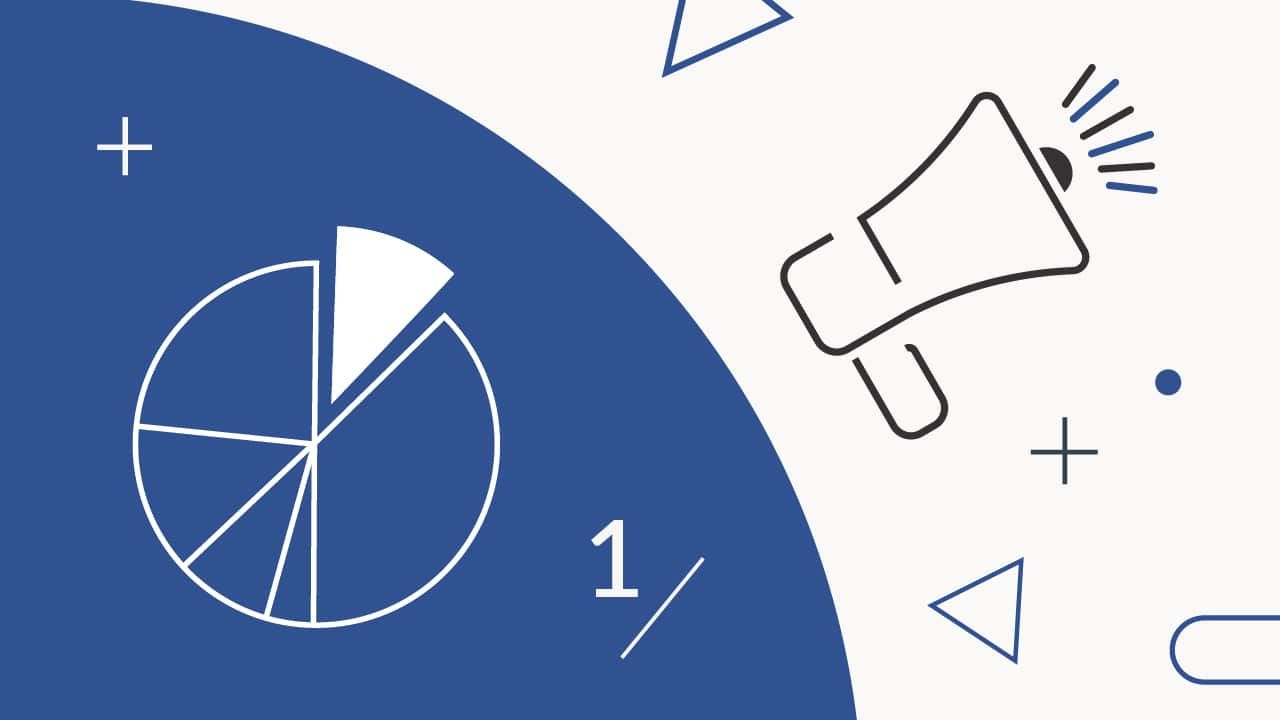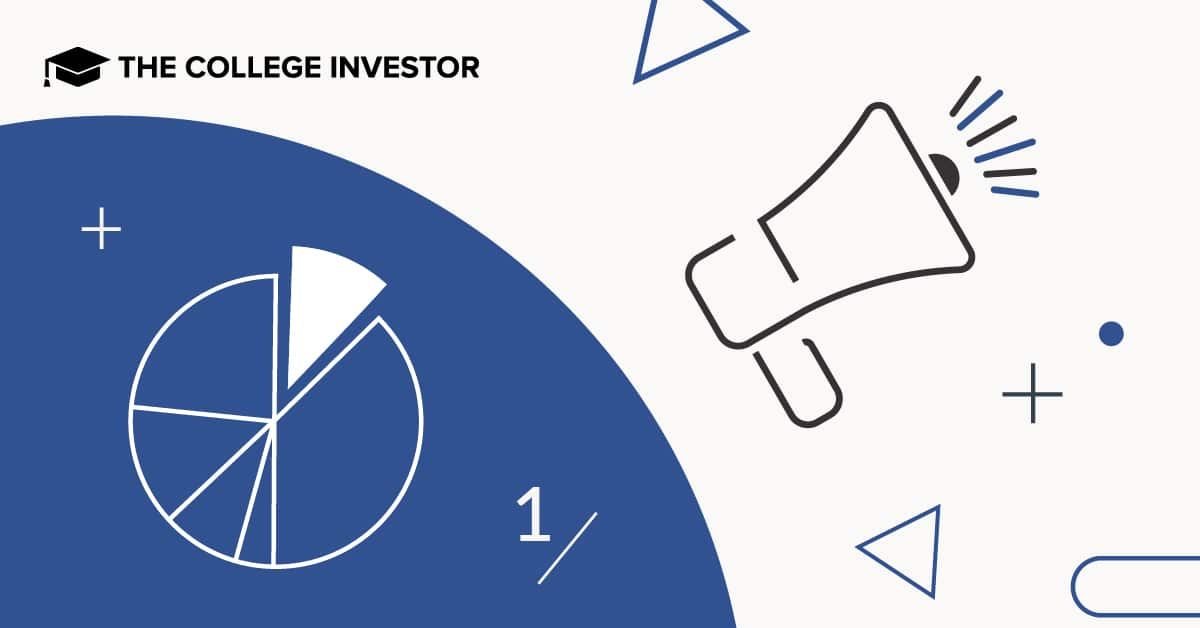
For more than a decade, mortgage interest rates saw mostly downward trends, with “historically low” rates dropping year after year. But even with low rates, tapping into home equity typically means taking on more debt and higher monthly payments.
But many homeowners (particularly people living in urban areas with home shortages) are seeing their home equity position grow. Tapping into home equity could allow them to invest outside of their home, or enjoy high dollar indulgences (such as a home remodel). But taking on new financial obligations doesn’t always make sense, even when your home is a valuable asset.
Fraction is an innovative company that’s reimagining the HELOC. It operates in British Columbia and Ontario as well as Washington State and Colorado. It allows borrowers to take out a no-payment loan using a portion of their house as collateral. The repayment begins after ten years or when a borrower sells their home.
Borrowers pay a minimum interest rate of 7.99% to 9.37% APR when the loan is repaid, but the “effective” interest rate could rise because Fraction buys an equity stake in your house. Fraction’s maximum interest rate is 12.49% to 16.02% APR. The minimum and maximum APR depend on the loan term (longer loans have higher rates).
Quick Summary
- HELOCs with no monthly payments for five years (or pay when you sell).
- Option to renew loan after five years.
- Interest rate based on home price growth.
- Fraction caps interest rates, so homeowners in fast-growing areas can capture their upside growth.
- Loans up to 41% of your home value (35% for 10-year loans) or $1.5 million.
Fraction Details | |
|---|---|
Product Name | Fraction HELOC |
Equity Access | Up To $1,500,000 |
Term | Up To 5 Years |
Origination Fee | 2.0% to 2.50% |
Promotions | None |
What Is Fraction?
Fraction is a HELOC company that is reimagining the HELOC lending space. The lender, which operates in British Columbia, Ontario, Colorado and Washington State operates more like a home equity “investor.” The loans it issues have interest rates that are tied to your home’s value rather than to some external interest rates.
As a borrower, you will pay interest rates between 7.99% to 16.02%, but the exact amount you pay depends on the value of your home when you sell. The faster your home price grew during the borrowing period, the higher the interest rate you’ll pay. But Fraction caps the maximum interest rate, so you can capture additional upside if your house grew at an astronomical rate.
What Does It Offer?
Fraction offers HELOCs for paid-off homes in British Columbia, Ontario, Colorado and Washington, but these aren’t traditional HELOCs. The Fraction HELOC has a unique array of features.
Must Have A Paid-Off House
Fraction must have a first-lien position on your house. That means you must own your house free and clear to take out a loan from Fraction.
Can Be Used To Buy A House
The only “exception” to the paid-off house rule is for homebuyers who want to use Fraction to buy a house. Fraction has a maximum LTV of 35% for five-year loans, so borrowers need to put at least 65% down to get a 10-year loan.
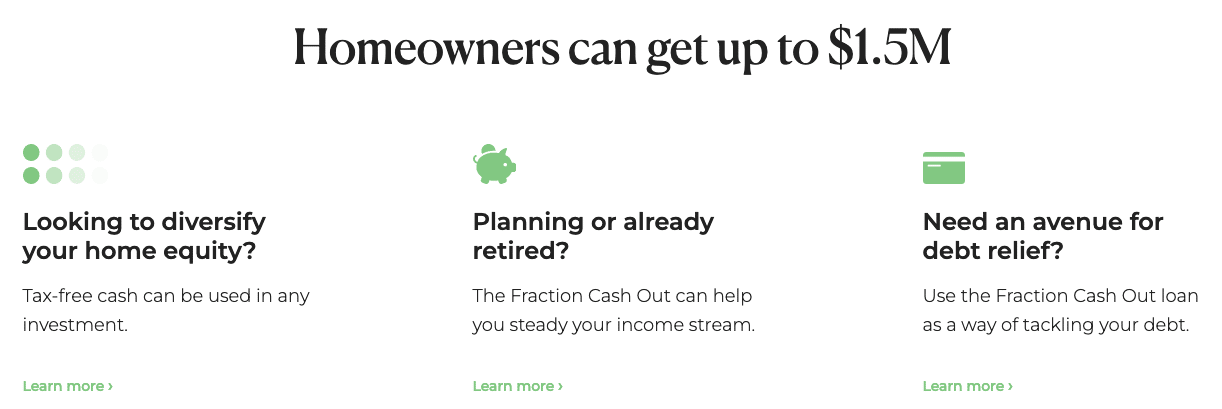
Access Up To $1.5 Million Immediately
Fraction offers HELOCs up to $1.5 million or 41% of your home equity position. Once approved, borrowers can get cash immediately.
No Monthly Payments For The Loan Term
Fraction offers five-year HELOC terms. During the borrowing period, borrowers pay no monthly payments.
Floating Interest Rate Based On Your Home's Value
The Fraction interest rate always falls in a range between 7.99%-16.02% APR for five-year loans, depending on your location and other factors. However, the interest rate doesn’t depend on some external interest rate. Instead, the rate depends on your home’s value when you pay off the loan.
Full Repayment Required
When a borrower sells their home, their loan is due in full. The loan is also due in full when the loan term expires. Borrowers who cannot repay their loan may have the option to extend their loan for an additional five years.
Option For A 5 Year Renewal
Fraction offers a five-year loan product, but borrowers can request a 5-year loan renewal when their term is up. The renewal is subject to a credit check and an appraisal. If approved, borrowers have to pay a 1% loan renewal fee.
No Out-Of-Pocket Costs
Borrowers pay a variety of fees including a 2.0% or 2.5% loan origination fee, depending on location. However, this fee can be deducted from the proceeds of the HELOC, so your out-of-pocket borrowing costs are limited or even $0.
Very Limited Availability
Fraction only issues loans in British Columbia, Ontario, and Washington State.
Are There Any Fees?
When taking out a HELOC through Fraction you’ll pay a variety of fees including an inspection and appraisal fee, title insurance fees, and a 2.0% t0 2.5% loan origination fee.
These costs can be deducted from the loan proceeds, so you will not have out-of-pocket fees at the time of borrowing.
Borrowers who choose to extend their loan beyond the initial five-year term will pay a 1% loan renewal fee at the point of renewal.
How Does Fraction Compare?
Fraction is a loan designed to help homeowners access their home equity. The tool it offers is either the “best of both worlds” or the worst depending on how you view it.
As a loan, Fraction has modest fees (especially compared with Reverse Mortgages), and it requires no monthly payments for five years. However, the “interest rate” on the loan is pegged to your home value. And many Fraction borrowers will see effective borrowing rates in the double digits. Borrowers pursuing traditional HELOCs will typically have to make payments, but their interest rate is more stable than Fraction’s. To compare HELOC and Reverse Mortgage rates, you can use a site like LendingTree which allows users to get real quotes from multiple competitors.
Unlike a typical home equity sharing arrangement, Fraction puts a bit more risk onto homeowners. If a home’s value goes down, the borrower still has to pay Fraction principal and a minimum interest rate. However, the maximum interest rate is capped. If your home value explodes, you capture the upside. People engaging in home equity sharing arrangements typically don’t have “downside” risk, but they also don’t get to capture the upside gains. People who want downside protection can consider HomePace for an equity sharing arrangement.
No matter how you slice it, Fraction offers a unique product. It’s important to compare Fraction to HELOCs, Reverse Mortgages (If you’re at retirement age), and home equity sharing arrangements, to see whether it makes sense for you.
Here's a quick comparison with some of the more popular home-equity sharing products:
Header | 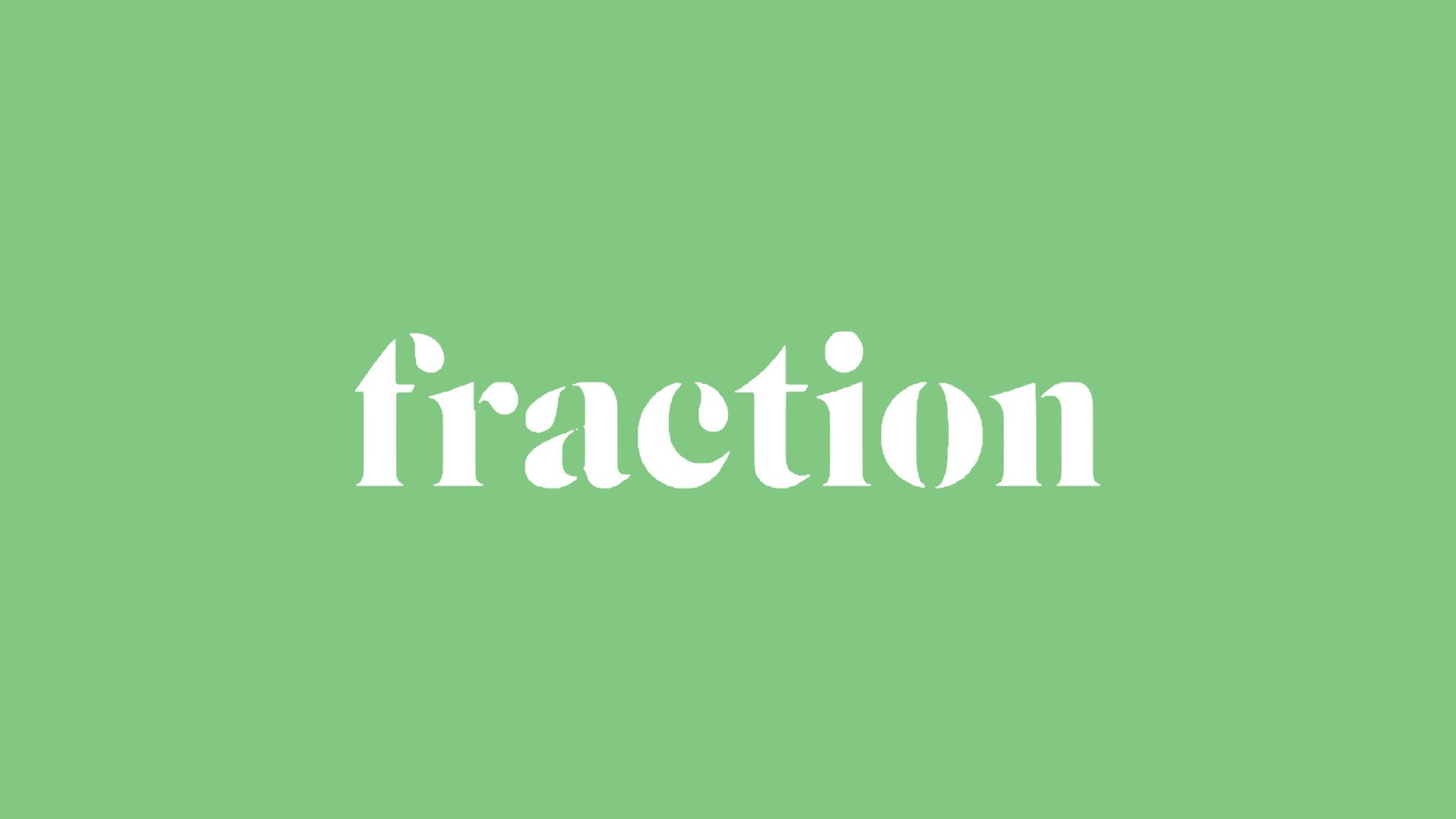 | 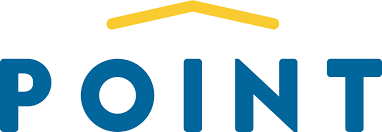 | |
|---|---|---|---|
Rating | |||
Equity Access | Up to $1,500,000 | Up to $350,000 | Up to $500,000 |
Term | 5 years | 30 years | 30 years |
Fees | 2.0% to 2.5% | 3% to 5% | 3% |
Cell |
How Do I Open An Account?
The Fraction online Application is simple and secure. Applicants start by providing their property address, so Fraction can ensure the home is in the proper lending area. Assuming the property qualifies, users provide personal and financial information before submitting their basic online application.
To be approved, borrowers will undergo a credit check and a home appraisal to ensure that the asset can back up the loan.
Is It Safe And Secure?
Fraction is a technology company that is used to doing business online. Its website is secure and encrypted to help keep user information safe. It is also a BC licensed mortgage broker in Canada and a member of the National Mortgage Lending Services in the US. These accreditations show that Fraction is required to uphold a certain set of standards to protect borrowers. In the US, this includes showing borrowers loan and fee documents.
How Do I Contact Fraction?
The United States-based headquarters for Fraction is 2120 University Ave, Unit 407, Berkeley, 94704. In the United States, you can call Fraction at 1-844-562-5546. People with questions can also use the contact button in the bottom right corner of the Fraction website.
Is It Worth It?
Fraction has an interesting value proposition, but the effective interest rates on the loans seem high, even given the rising interest rate environment that we’re in today. That said, no payment loans are unique, and they offer value to people who want to access their home equity without increasing their monthly outflows.
In general, tapping into home equity for luxury spending isn’t a great idea. But using home equity to invest elsewhere, or to pay for truly important expenses (kids' college for example) can be a decent option. Before you use Fraction, compare it to other loan options to make sure you get the best deal.
Fraction Features
Equity Access |
|
Fees | 2.0% to 2.5% origination fee |
Term | 5 years + 5 year renewal |
Max Loan-to-Value Ratio (LTV) | 45% |
Average Credit Score | No firm requirement |
Max Debt-to-Income Ratio (DTI) | N/A |
Prepayment Penalty | No |
Interest Rate Type | Hybrid up to 15% APR |
Inspection | Not required |
Customer Service Number | 844-562-5546 |
Customer Service Hours | Mon-Fri, 8 AM – 5 PM (EST) |
Customer Service Email | Contact Form |
Mobile App Availability | None |
Promotions | None |
Fraction Review
-
Rates And Fees
-
Ease Of Use
-
Products and Services
-
Customer Service
-
Availability
Overall
Summary
Fraction is a HELOC alternative for paid-off homes that may be a better option than a HELOC or cash-out refinance.
Pros
- No Monthly Payments.
- Fraction caps its interest rate, so homeowners can capture upside potential.
- Get access up to $1.5 million
Cons
- Homeowners pay a minimum of 7.99% to 9.37% APR on their loan, and the interest rate can go higher.
- Could end up being more expensive than loan alternatives.
- Must have a fully paid-for house to use Fraction.
- Only available in select areas in Canada and the US.

Robert Farrington is America’s Millennial Money Expert® and America’s Student Loan Debt Expert™, and the founder of The College Investor, a personal finance site dedicated to helping millennials escape student loan debt to start investing and building wealth for the future. You can learn more about him on the About Page or on his personal site RobertFarrington.com.
He regularly writes about investing, student loan debt, and general personal finance topics geared toward anyone wanting to earn more, get out of debt, and start building wealth for the future.
He has been quoted in major publications, including the New York Times, Wall Street Journal, Washington Post, ABC, NBC, Today, and more. He is also a regular contributor to Forbes.
Editor: Clint Proctor
